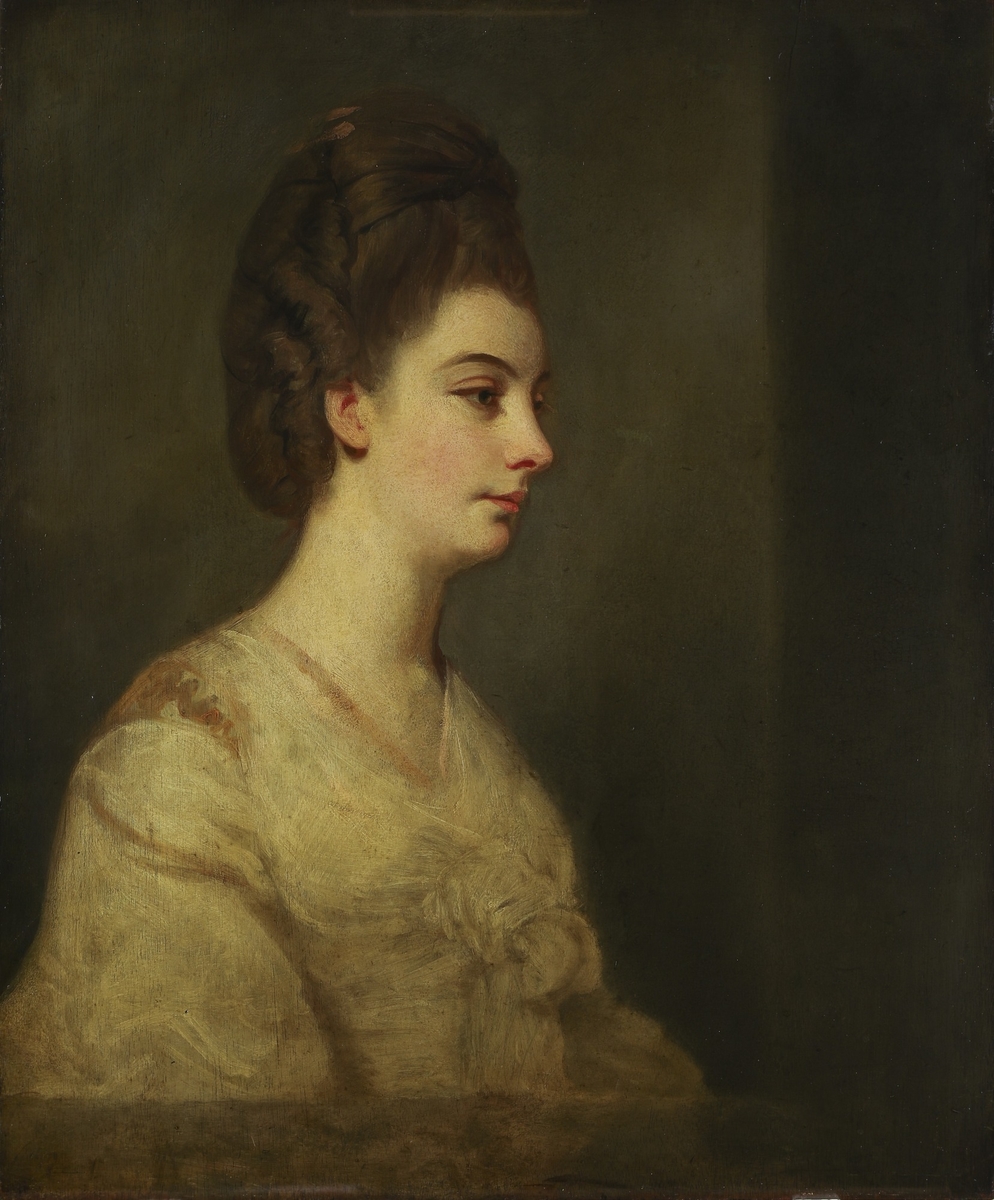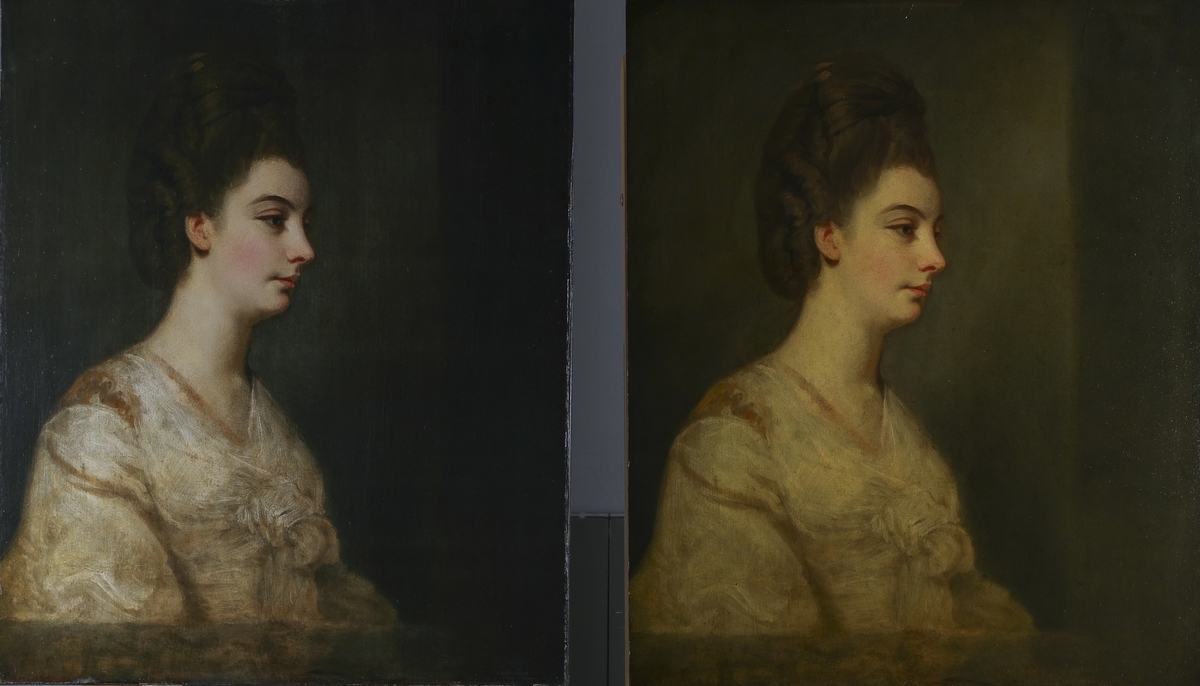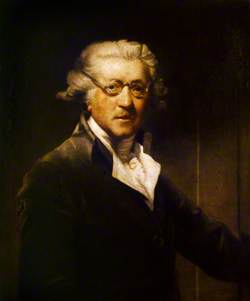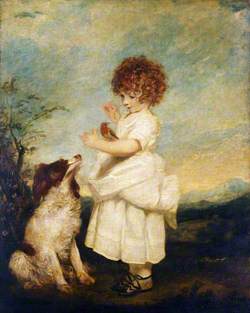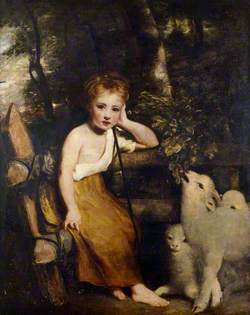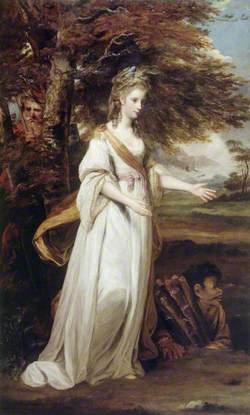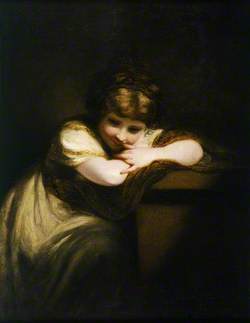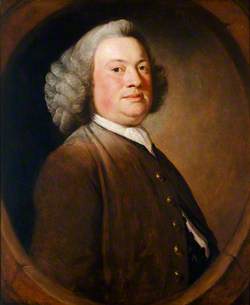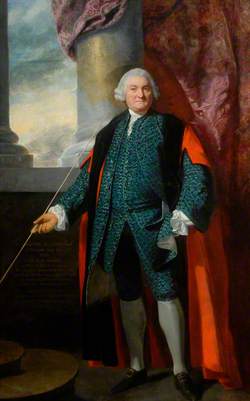How you can use this image
This image can be used for non-commercial research or private study purposes, and other UK exceptions to copyright permitted to users based in the United Kingdom under the Copyright, Designs and Patents Act 1988, as amended and revised. Any other type of use will need to be cleared with the rights holder(s).
Review the copyright credit lines that are located underneath the image, as these indicate who manages the copyright (©) within the artwork, and the photographic rights within the image.
The collection that owns the artwork may have more information on their own website about permitted uses and image licensing options.
Review our guidance pages which explain how you can reuse images, how to credit an image and how to find images in the public domain or with a Creative Commons licence available.
Notes
Add or edit a note on this artwork that only you can see. You can find notes again by going to the ‘Notes’ section of your account.
This portrait originated from the collection of Glasgow coachbuilder Archibald McLellan (1795–1854), a prolific collector of Italian, Dutch, Flemish and British art, who bequeathed 510 paintings to the Corporation of Glasgow in 1854, along with his Sauchiehall Street gallery. This painting was thought to depict the famous soprano singer, poet, writer, Whig supporter and member of the Blue Stockings Society, Elizabeth Ann Linley (1754–1793), who married playwright Richard Brinsley Sheridan (1751–1816). Renowned for her beauty, she was painted by Thomas Gainsborough, Joshua Reynolds and Richard Samuel. However, the identity of the sitter is now uncertain. Doubt was cast on the portrait’s likeness by a descendent, the Marquess of Dufferin and Ava, in a letter from 8 March 1897: ‘I have great doubts as to whether the portrait is really that of Miss Linley, as it differs so much from her appearance as represented in Sir Joshua’s St Cecilia and in Gainsborough’s portrait.
The painting was researched by art historian Bendor Grosvenor and social historian Emma Dabiri in 2021 as part of the BBC TV series 'Britain’s Lost Masterpieces' (aired BBC Four, 7 February 2022) and he believes the portrait may in fact show Anne Luttrell (1743–1808), who controversially married Prince Henry, Duke of Cumberland and Strathearn, the younger brother of George III, in 1771 – she was a commoner, not a member of the royal family or even aristocracy, and previously married. Her family were seen as political opportunists. Horace Walpole cruelly wrote: ‘her coquetry was so active, so varied and yet so habitual, that it was difficult not to see through it and yet as difficult to resist it.’ Their marriage resulted in the Royal Marriage Act (1772) which prevented future descendants of George II to marry without the permission of the sovereign. The portrait may relate to a finished portrait of the Duchess by Reynolds at Waddesdon Manor (exhibited at the Royal Academy in 1773), perhaps a preparatory study or abandoned alternative composition (x-ray shows that her left arm was once raised to her face). However, the eyelids and brows of the sitter in Glasgow Museums' portrait do not appear to match those in the Waddesdon portrait.
The painting came into Glasgow Museums’ collection in 1856 as by the society portraitist and founder and first President of the Royal Academy of the Arts in London, Sir Joshua Reynolds (1723–1792), but its attribution was later questioned. Investigation by conservator Simon Gillespie and his team for 'Britain’s Lost Masterpieces', in consultation with Reynolds specialist Rica Jones, has confirmed that the painting is indeed by Reynolds. Dendrochronology, a scientific dating method, confirmed the age and type of wood as mahogany. Although Reynolds usually painted on canvas, he did sometimes use single large planks of mahogany like this one.
Microscopic cross-sections of the paint revealed numerous complicated layers of pigment and very discoloured varnish. A sample taken from the earlobe shows five paint layers including lead white, cinnabar, red ochre and ivory black – all pigments Reynolds used. Linseed/poppy and walnut oil were also present which is consistent with Reynolds’ technique. It is evident that paint had been applied directly to the mahogany without a ground layer and weak boundaries between pigment layers suggest a rapid, wet-in-wet painting technique. All this is consistent with Reynolds' experimental practice.
Title
Unfinished Portrait of an Unknown Lady
Date
c.1770
Medium
oil on mahogany panel
Measurements
H 74.9 x W 62.2 cm
Accession number
253
Acquisition method
Archibald McLellan Collection, purchased, 1856
Work type
Painting
Glasgow Museums Resource Centre (GMRC)
200 Woodhead Road, South Nitshill Industrial Estate, Glasgow G53 7NN Scotland
Stories
-
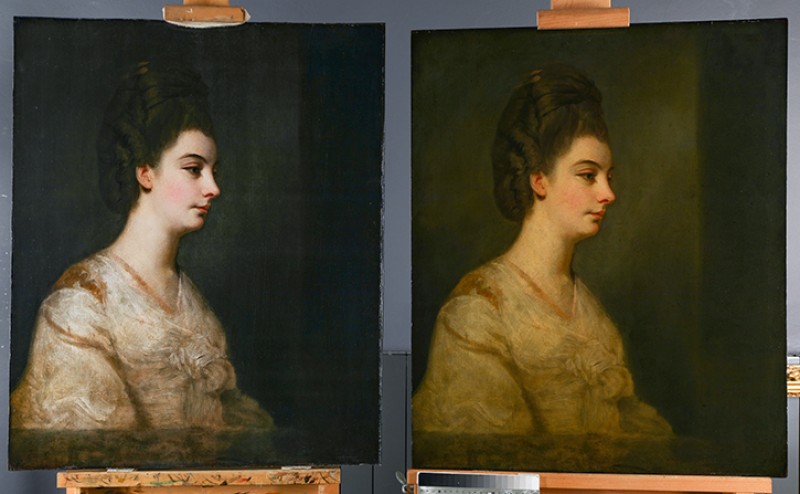 Varnish removal
Varnish removalSimon Gillespie
-
 Using x-ray and infrared images
Using x-ray and infrared imagesSimon Gillespie
-
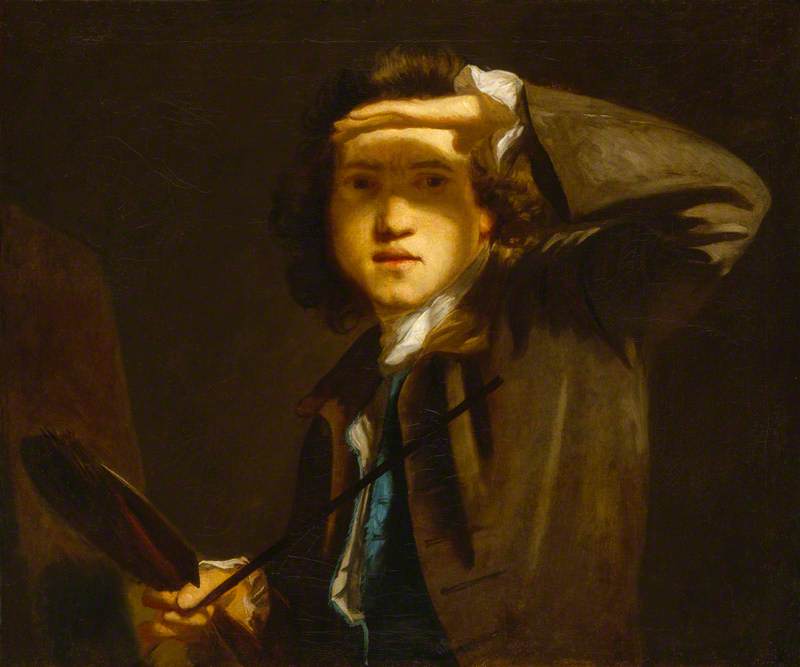 Joshua Reynolds: painter of the Georgian elite
Joshua Reynolds: painter of the Georgian eliteAndrew Shore
